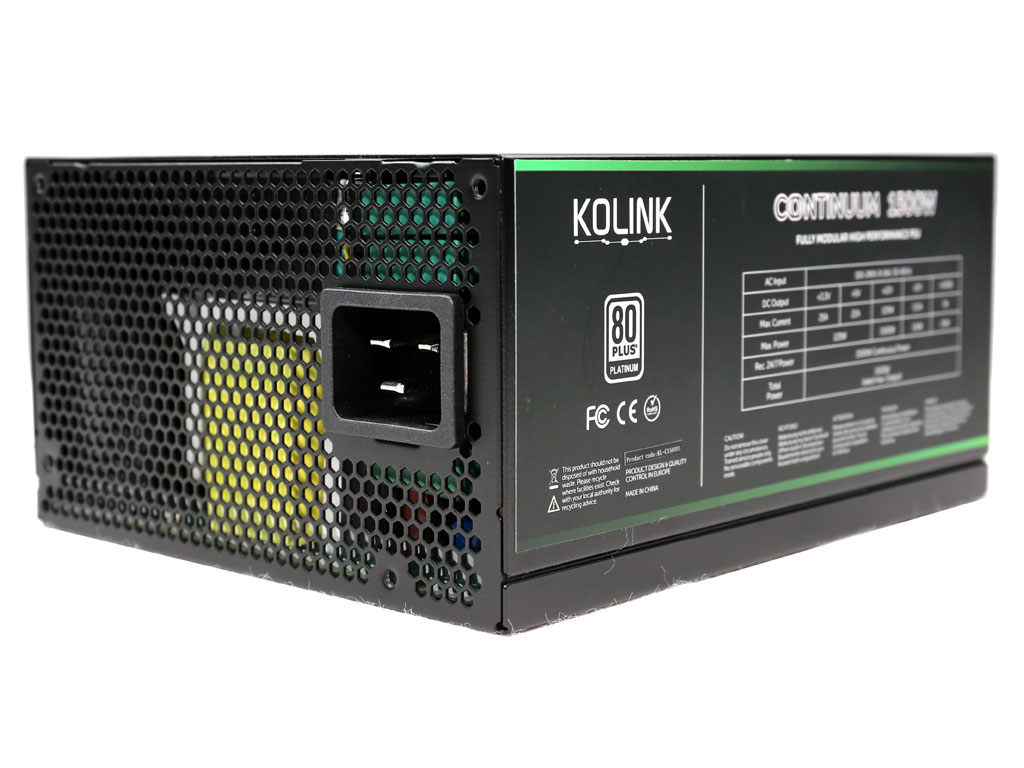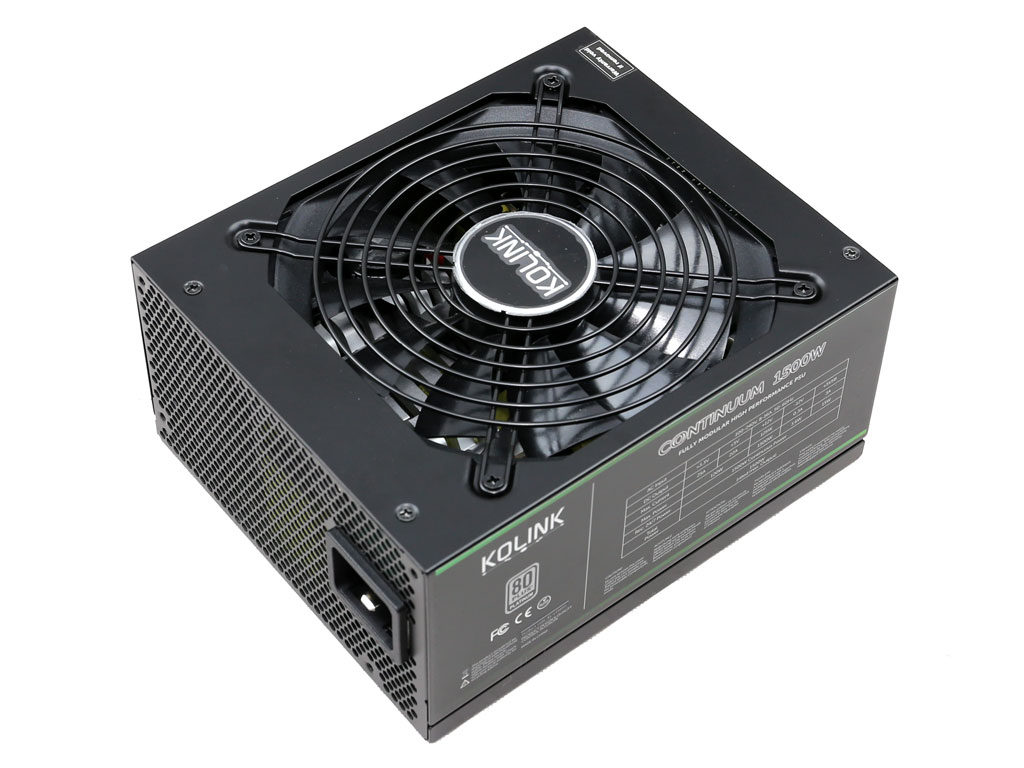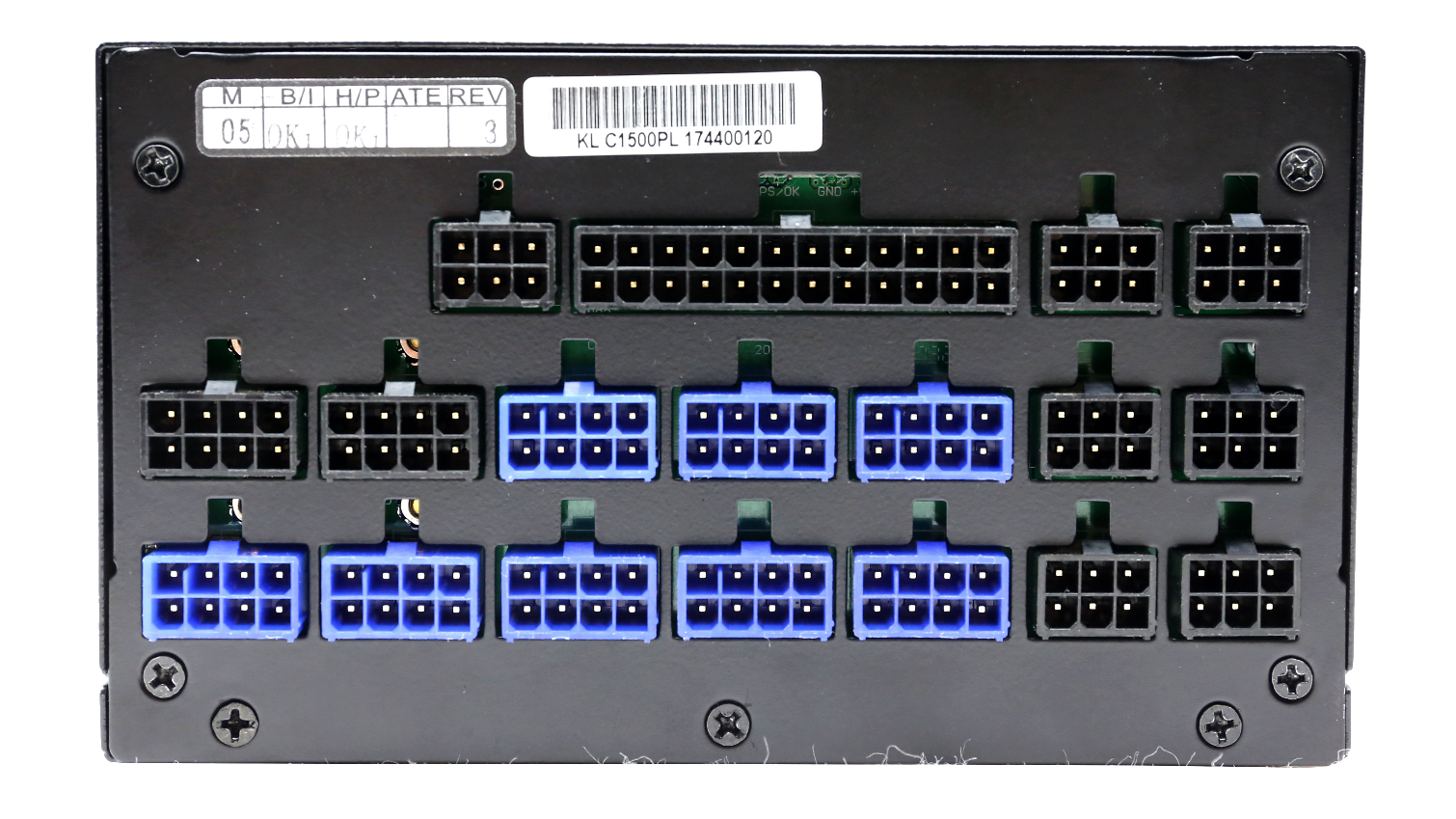Early Verdict
This is a PSU that will satisfy every miner out there. It is powerful, it has a load of PCIe and 4-pin Molex connectors, its build quality is great and its power output is clean from ripple with the +12V rail registering within 1% load regulation. The fan profile and the DBB fan will trouble plain users since they dramatically increase this PSU's output noise, but they are ideal for mining applications. At this price point, it is very tough to find something equally good.
Pros
- +
Performance per buck ratio
- +
Full power at 48°C
- +
Build quality
- +
Ripple suppression
- +
Load regulation (+12V)
- +
Transient response (+12V)
- +
Accurate Power Ok signal
- +
Inrush Current
- +
Fully modular
- +
2x EPS & 12x PCIe connectors
- +
Double Ball-Bearing fan
- +
Low conducted EMI transmissions
- +
Semi-passive operation
- +
Compact dimensions (for a 1.5kW PSU)
Cons
- -
Noisy
- -
Hold-up time
- -
5VSB turn-on transient
- -
Load regulation on the minor rails
- -
3.3V rail's transient response
- -
Many cables can be connected to non-electrically compatible sockets
- -
No power switch
- -
No power cord included (there will be the option to buy one along with the PSU though)
Why you can trust Tom's Hardware
Features & Specifications
Early on, Kolink dealt mostly with cooling products thanks to a strong relationship with Noctua. At some point, though, a local branch of Kolink called Kellytech was sold to Caseking Group, resulting in two Kolink companies: one of them based in Taiwan and the other in Hungary. The Taiwanese Kolink continues to deal with cooling products, while the Hungarian Kolink includes cases, cables, various peripherals, and power supplies in its portfolio. All of those products are already available through the Caseking and overclockers.co.uk online stores. However, we're told that Kolink will also enter the U.S. market in 2018.
Within a relatively short period of time, Kolink's PSUs left a good impression on the EU market. The team responsible for them seems to know what it's doing, delivering the highest possible performance and keeping production cost low. Of course, given today's cryptocurrency mining craziness and strong demand for high-capacity PSUs, it's no surprise to see Kolink introducing a 1500W model.
The Kolink KL-C1500PL is based on an Enhance Electronics platform. Besides fully modular cabling, it also features semi-passive operation and a single +12V rail. Efficiency-wise, it is 80 PLUS Platinum-certified. On the Cybenetics scale, it scores ETA-A for efficiency and LAMBDA-S (Standard) for noise. Since this PSU was designed with heavy utilization in mind, it uses a double ball-bearing fan, which is ideal for conditions like the ones encountered by power supplies in mining rigs. Fluid/hydro dynamic fans might make less noise, but their operating lifetimes take a huge hit when they're subjected to hot environments (>35°C).
Specifications
For such a high-capacity PSU, the 80 PLUS Platinum and ETA-A efficiency levels are big assets. A LAMBDA-S noise certification is certainly less impressive. But remember that this is a PSU designed to address mining applications, where reliability under tough operating conditions comes first. Noise output just isn't one of its priorities (hence the aforementioned DBB fan).
At least in Europe, this is a €300 power supply, including 19% VAT. It's definitely not a budget-oriented unit. But if you take its technical specifications and features into account, it is still much more affordable than the high-capacity competition from EVGA, Corsair, Thermaltake, and Cooler Master.
Kolink's representatives claim that we'll see the company's products in the U.S. sometime around the second half of 2018. If it can keep the KL-C1500PL's price close to $300, this PSU should fare well domestically.
Power Specifications
| Rail | 3.3V | 5V | 12V | 5VSB | -12V | |
|---|---|---|---|---|---|---|
| Max. Power | Amps | 25 | 22 | 125 | 3 | 0.3 |
| Watts | 120 | 1500 | 15 | 3.6 | ||
| Total Max. Power (W) | 1500 |
The minor rails offer up to 120W combined power, while the +12V rail can deliver up to 125A, easily supporting multiple graphics cards. Finally, the 5VSB rail looks kind of weak for a 1.5kW unit. Still, it should be able to handle most applications.
Get Tom's Hardware's best news and in-depth reviews, straight to your inbox.
Cables & Connectors
| Modular Cables | ||||
|---|---|---|---|---|
| Description | Cable Count | Connector Count (Total) | Gauge | In Cable Capacitors |
| ATX connector 20+4 pin (600mm) | 1 | 1 | 16-22AWG | No |
| 4+4 pin EPS12V (710mm) | 2 | 2 | 16AWG | No |
| 6+2 pin PCIe (610mm+100mm) | 4 | 8 | 16-18AWG | No |
| 6+2 pin PCIe (610mm) | 4 | 4 | 16AWG | No |
| SATA (610mm+140mm+140mm+140mm) | 2 | 8 | 18AWG | No |
| Four-pin Molex (610mm+150mm+150mm+150mm) | 2 | 8 | 18AWG | No |
Two EPS cables and eight PCIe connectors are installed across four cables. Besides those eight connectors, there are four more on dedicated cables. In total, then, this unit sports 12 PCIe connectors, easily satisfying high-end miners. The number of peripheral connectors is increased as well, including eight four-pin Molex connectors, which are usually utilized by the PCIe risers.
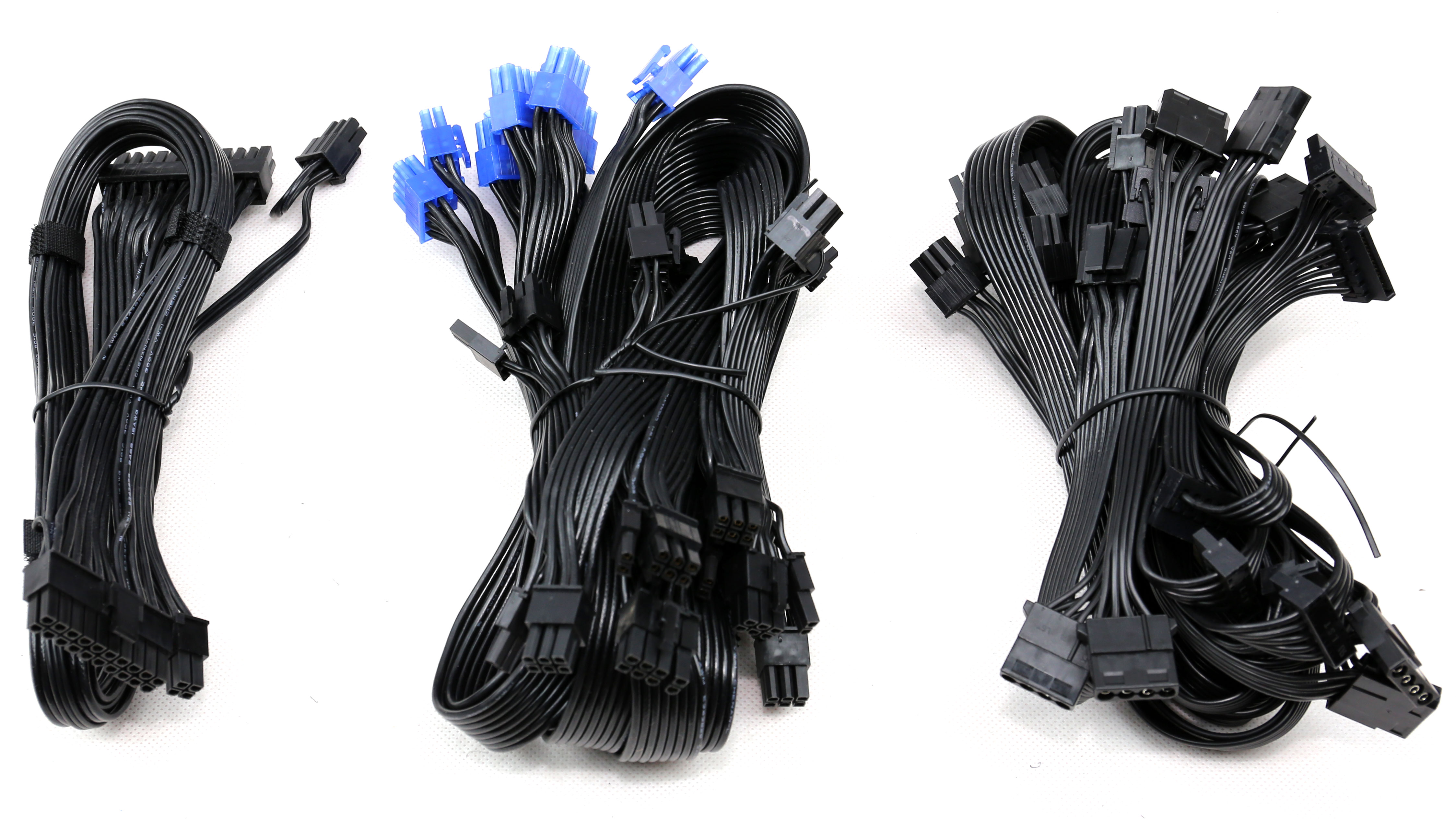
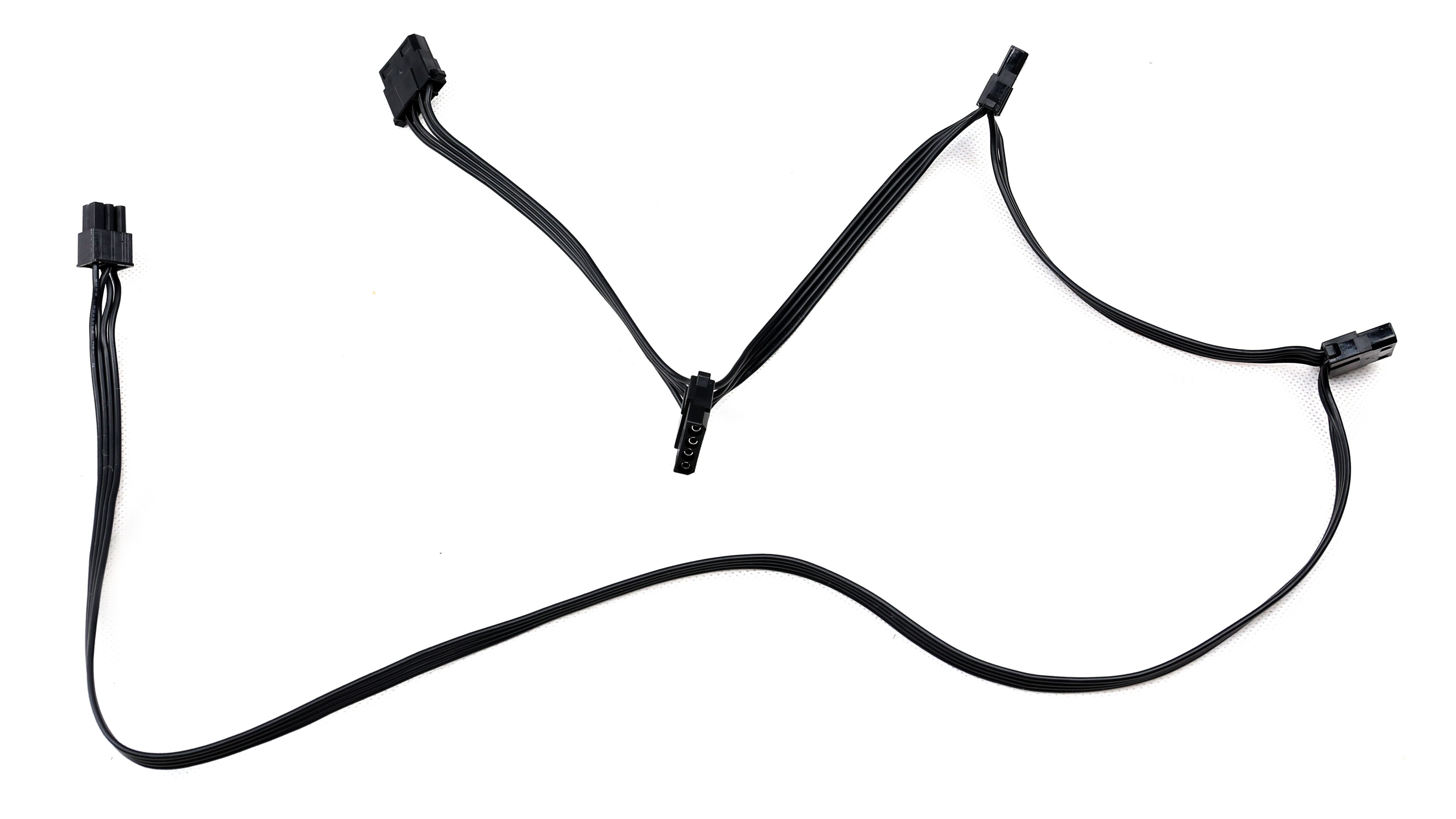
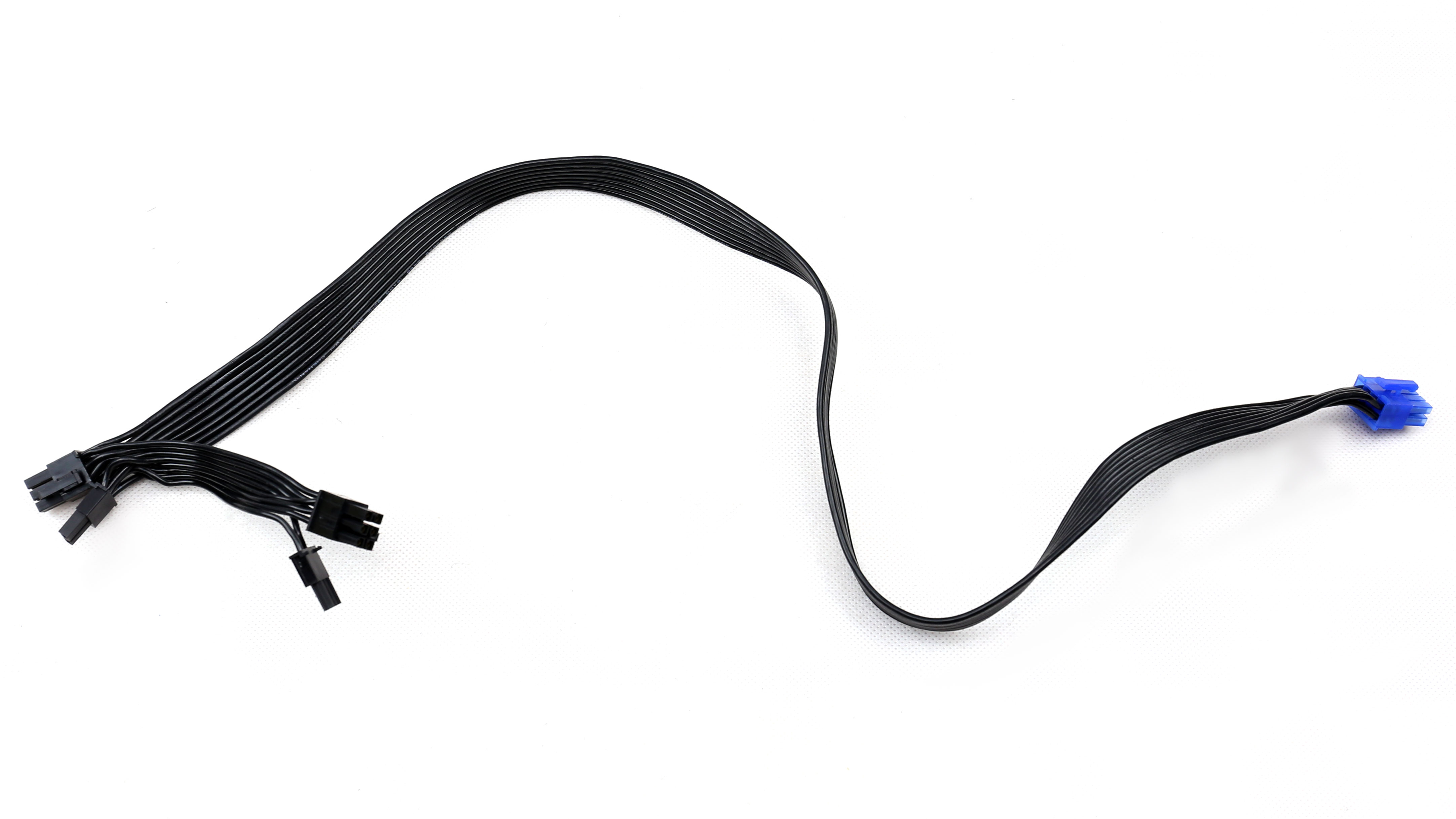
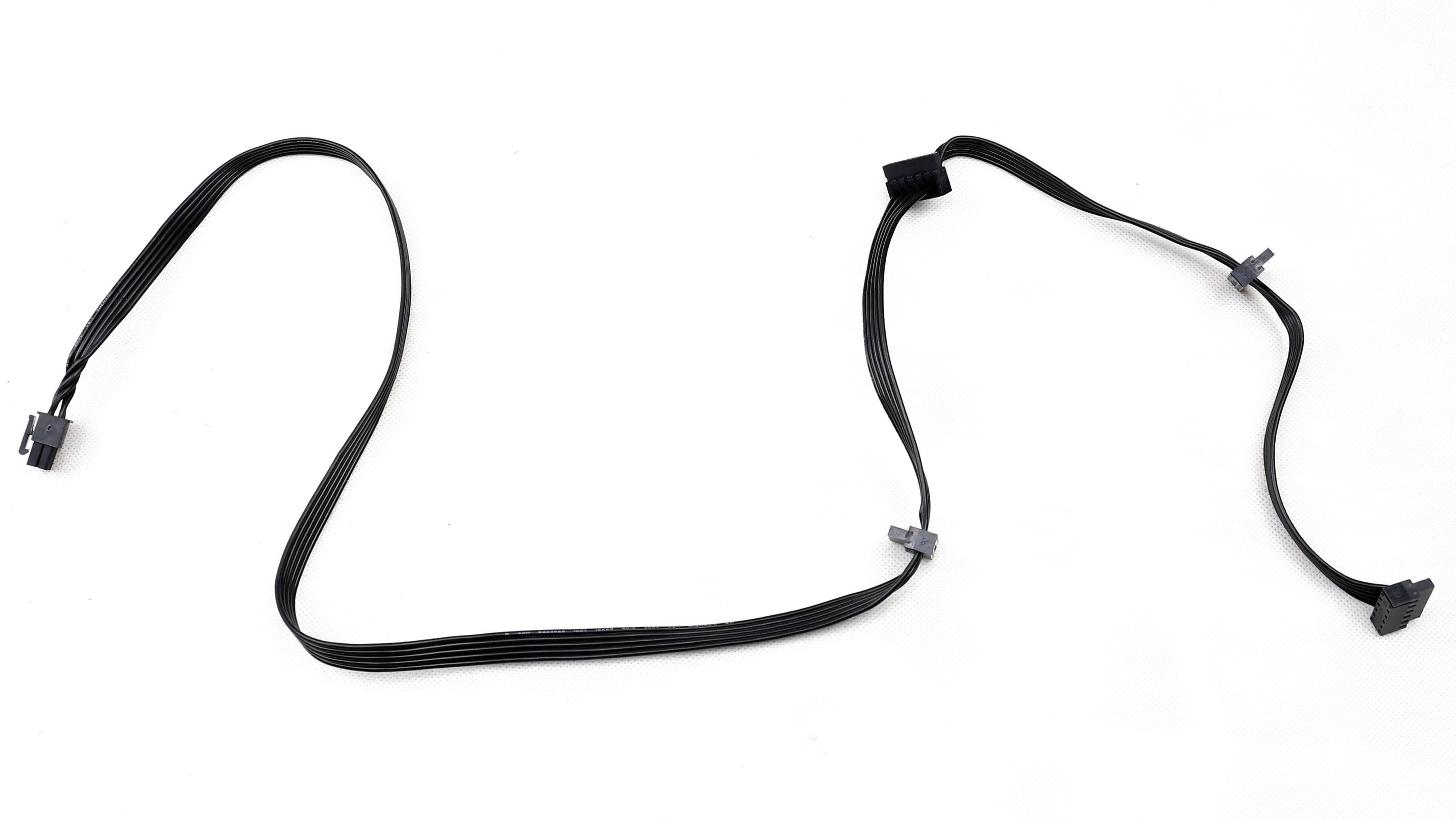
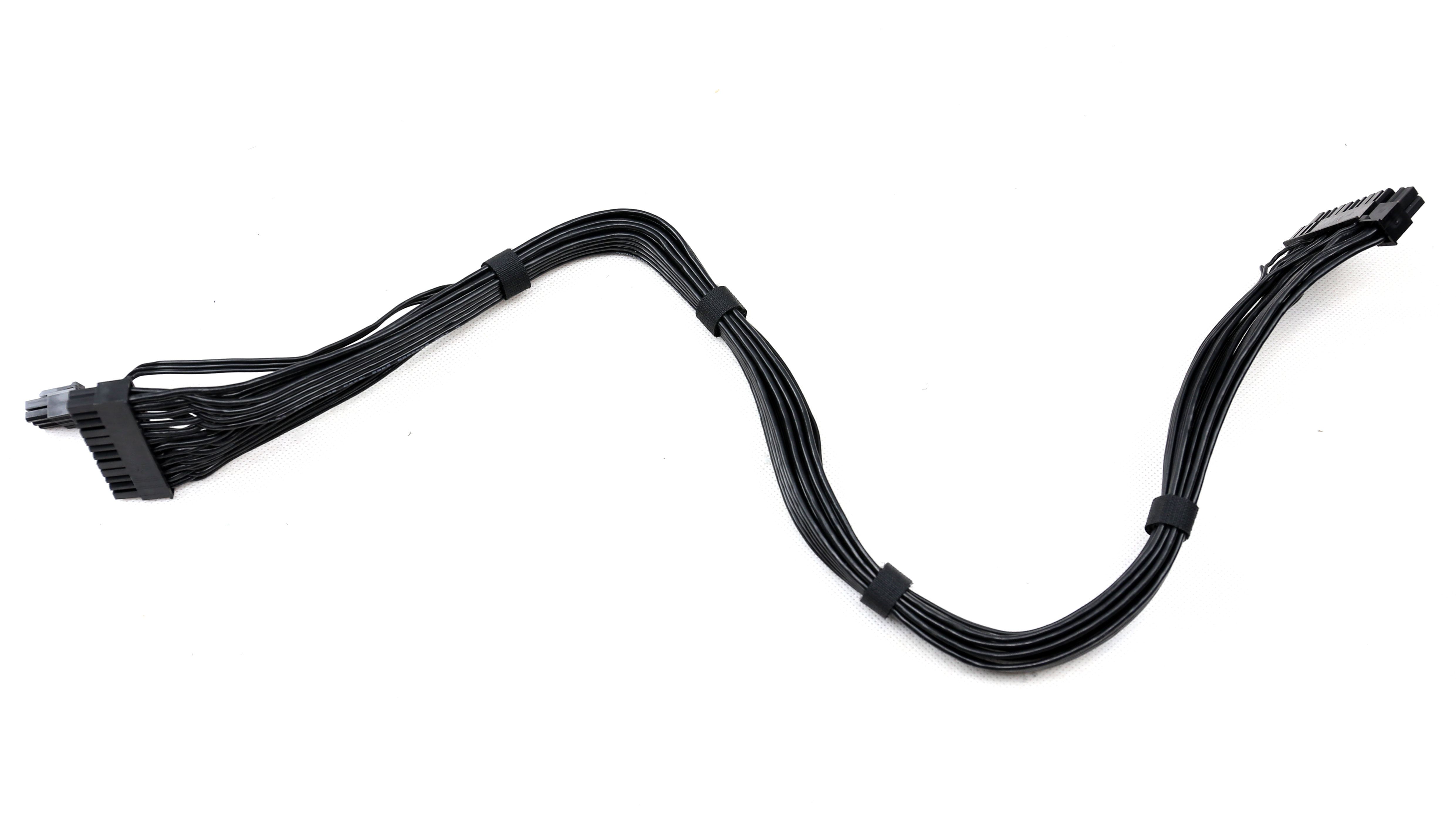
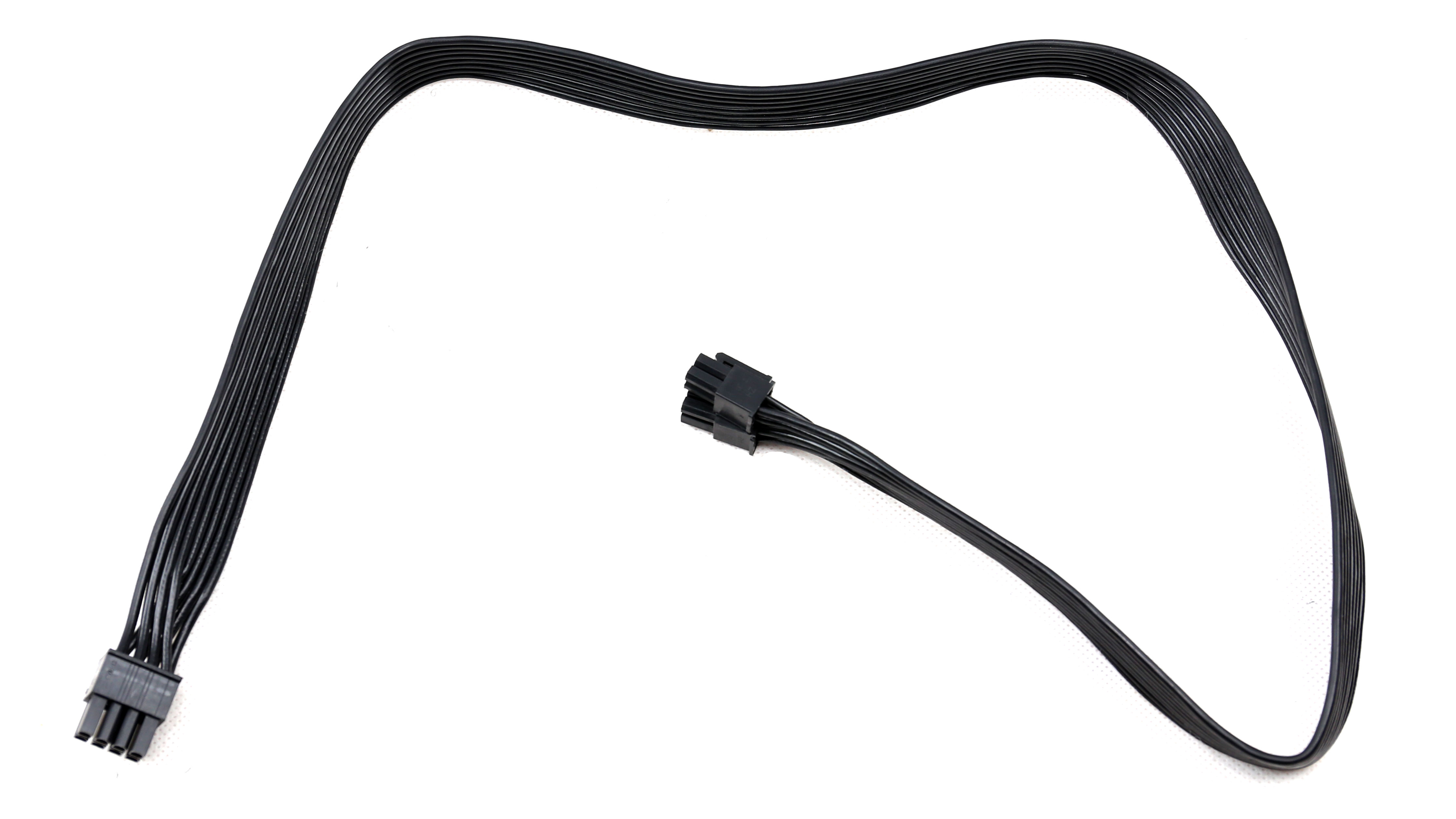
The KL-C1500PL's cables are shown in the photos above.
Blue sockets are for PCIe cables and the two black ones with eight pins each correspond to EPS cables. The problem we see is that all eight-pin connectors have the same pattern, making it possible to accidentally connect an EPS cable to a PCIe socket and vice versa. Because those connectors are not electrically compatible, this is a problem.
Adding insult to injury, the same applies to the six-pin connector accompanying the 24-pin ATX cable. This connector is identical to the six-pin ones for peripheral connectors, so if you connect the ATX cable's auxiliary to one of the peripheral sockets, again, you're in trouble. Best-case, the PSU doesn't start. Enhance Electronics should be more careful and change the pattern of its sockets to avoid mechanical compatibility of electrically dissimilar cables.
Power Distribution
Since this PSU features a single +12V rail, we do not have anything to say about its power distribution.
MORE: Best Power Supplies
MORE: How We Test Power Supplies
MORE: All Power Supply Content

Aris Mpitziopoulos is a contributing editor at Tom's Hardware, covering PSUs.
-
ozicom "The problem we see is that all eight-pin connectors have the same pattern, making it possible to accidentally connect an EPS cable to a PCIe socket and vice versa." Well I had a fully modular PSU in past and you can't connect eight pin of EPS to PCIe because the sockets may look same but they're not. If you look closer on top left two sockets of black and blue eight pins the notches are not same so you can't connect it. But if you tried and connect it it's a problem of course.Reply
